7 Things Marvel’s Spider-Man 2 Does Better (And Worse) Than the Batman Arkham Series
Seven ways Marvel's Spider-Man 2 is better than Batman: Arkham, and seven ways it is worse.

In the short window since its release, Marvel’s Spider-Man 2 has already cemented itself as an all-time classic in the superhero genre and is one of the most memorable games in an absolutely stacked year of releases. Some have already declared that Insomniac’s Spider-Man sequel is the greatest superhero videogame ever made.
Before the ascension of Marvel’s Spider-Man, the name synonymous with great superhero games was Rocksteady’s Batman: Arkham series (Asylum, City, and Knight) and WB Games Montreal’s prequel (Origins), which released over six years between 2009 and 2015, providing the highest rated comic book adaptions ever seen in the videogame medium at the time. So, how does Insomniac’s Spider-Man 2 stack up against Rocksteady’s DC Comics predecessor?
7 Things Marvel’s Spider-Man 2 Does Better (And Worse) Than the Batman Arkham Series
Let’s take a look as we examine seven ways that Marvel’s Spider-Man 2 has surpassed Batman: Arkham and seven ways that Spidey trails the Caped Crusader’s videogame franchise.
Better: Combat
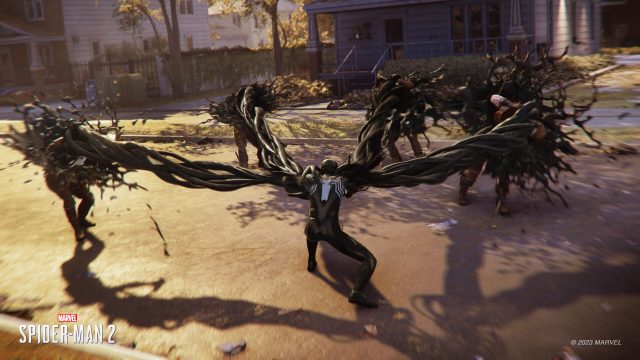
Even though Marvel’s Spider-Man 2 was heavily influenced by Rocksteady’s “Arkham-styled” combat, Insomniac has far exceeded the Batman Arkham series in its epic melee battles. This isn’t to say the Arkham games have bad combat (quite the contrary), but the Spider-Man sequel simply feels like an evolution, with each fight creating cinematic moments thanks to Peter Parker and Miles Morales’ varied powers and abilities that far outweigh anything that can be done with Batman’s gadgets.
Worse: Stealth

There is simply no contest here, Marvel’s Spider-Man 2’s stealth sections can’t hold a candle to their Batman: Arkham counterparts. Maybe it was due to the fact that the Dark Knight is a stealthier character than Spider-Man, but every Rocksteady (and WB Montreal) Batman: Arkham game completely outclasses Marvel’s Spider-Man series’ stealth gameplay.
The attention to detail in the Arkham series’ stealth remains unparalleled in the superhero genre, with enemies that could be taken down in a variety of ways through gadgets, and predator takedowns from vantage points (like gargoyles, vents, grates, etc). Batman could even see enemy heart rates and fear levels through the detective mode mechanic in the Arkham series. Also, the enemy A.I. was highly intelligent with henchmen consistently adapting to Batman’s stealth and working together, which forced gamers to think more tactically, as stealth encounters would become increasingly difficult during the campaign.
In comparison, the Marvel Spider-Man series’ stealth is repetitive, simplistic, and the enemy A.I. is easily manipulated at best, to highly incompetent at worst. It’s almost funny how Spider-Man 2’s enemies don’t notice their missing criminal compatriots, webbed-up and dangling a short distance above their heads, while simultaneously moving in highly predictable, easy patterns, allowing themselves to be picked off one by one.
Better: Open World Traversal

When it comes to exploring the open world, Insomniac’s sequel truly captured the essence of what it means to be Spider-Man, as the web-swinging and newly introduced “web wings” hold distinct advantages over the grapnel gliding and Batmobile traversal in the Batman Arkham series. As much as I enjoyed grappling, dive bombing, and gliding through Rocksteady’s various Gotham locations, it just doesn’t quite match the thrill and excitement of riding the wind and casting webs in the shadow of New York skyscrapers in Marvel’s Spider-Man 2.
Worse: Locations/Setting

Although traversing the open world of Spider-Man may be superior to the Batman Arkham series, the setting itself is not, as Rocksteady integrated so many memorable, unique main locations and sub-locations into their games (such as the Penguin’s Iceberg Lounge and museum of horrors in Arkham City, among others). From the masterful Metroidvania interpretation of the iconic Arkham Asylum in the series’ debut, to City’s “Batman meets Escape from New York” vibe, every series location felt wholly unique and unforgettable. Marvel’s Spider-Man 2 may have a perfect setting in its own right and is undeniably impressive, yet it just isn’t quite as memorable as the Arkham series.
Better: Accessibility/Quality of Life

Insomniac Games’ developers have been hailed for their focus on accessibility and quality-of-life features in previous games, and Marvel’s Spider-Man 2 is no exception. This game is truly made for anyone and everyone, with so many customization options and settings tailoring the experience to players of all stripes and experience levels. Maybe Rocksteady can prove their accessibility prowess in the upcoming Suicide Squad: Kill the Justice League, but for now, Marvel’s Spider-Man clearly takes the cake in this respect.
Worse: Challenge/Difficulty

For gamers seeking a true challenge, The Batman: Arkham series is unquestionably more difficult than Insomniac’s Spider-Man franchise. Arkham’s difficulty can be lowered, but the game is far more demanding to master, as overcoming the various challenges, finding all of the Riddler trophies, building up flawless freeflow combos, and conquering the highest difficulty (which removes the block/counter indicator) takes some serious skill. In comparison, even on the highest difficulty modes, Marvel’s Spider-Man 2 includes ample hints, easily acquired collectibles clearly marked with waypoints, and an overall lesser challenge.
Better: Inclusivity
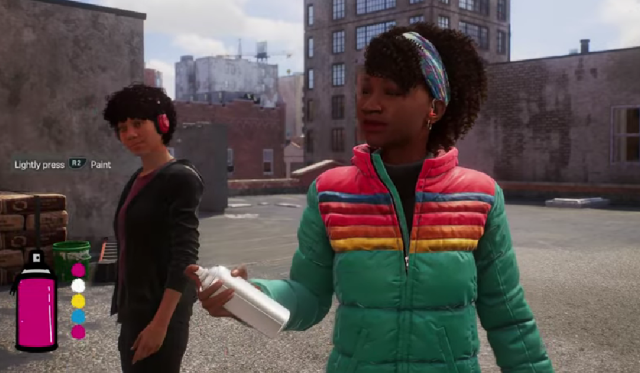
Marvel’s Spider-Man 2 is a game that truly reflects the real world with a cast of varied backgrounds, cultures, ethnicities, gender identities, and sexual orientations. There are also positive representations of vision and hearing-impaired as well, with a side mission that gives gamers insight into the deaf NPC, Hailey Cooper. I’m not saying that the Arkham series isn’t inclusive, as Rocksteady did utilize a multicultural cast, but Insomniac simply went above and beyond when it comes to representation.
Worse: Side Missions
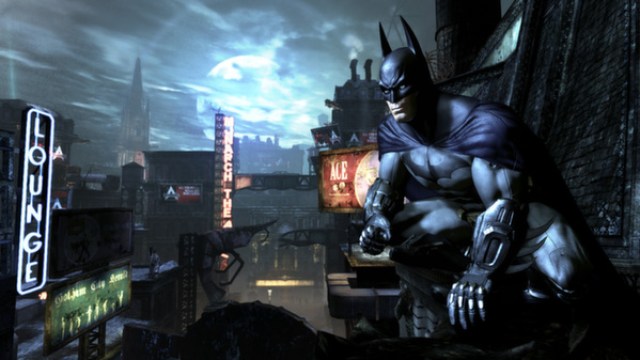
Even though Marvel’s Spider-Man 2 is ripe with exciting side missions, Batman: Arkham’s side quests have better gameplay, superior writing, create a sense of urgency, and feel more organic. For example, you could be exploring the open world of Arkham City and suddenly hear a payphone ringing, triggering the “Cold Call Killer” mission, or you might grapple up an unassuming building in Arkham Knight, only to be treated to a frightening Man-Bat jump scare out of nowhere, setting off the events of the “Creature of the Night” quest, etc. Almost all of the Arkham series’ side missions feature life-or-death scenarios, pitting Batman against some of Gotham’s most notorious supervillains in exciting short stories.
But what are Peter and Miles doing in the sidequests of Marvel’s Spider-Man 2, you might ask? Are they saving the world from devious supervillains? Outside of “The Flame” side mission, the answer is a resounding “no.” While Batman is off saving innocent Gothamites from villains and murderers, the Spider-Men are busy finding “missing” grandpas, helping a student ask someone to Homecoming, flying with pigeons, and recovering a missing mascot, among other tasks unbecoming of superheroes. Sure, they may be on-brand for the everyday antics that Spider-Man gets into, but they’re certainly not as thrilling as the Caped Crusader’s adventures. Worse yet, most of the side missions are in-game app requests, further killing any chance at organic discovery or urgency. In other words, when it comes to side quests – game, set, match, Arkham series.
Better: Graphics/Visuals
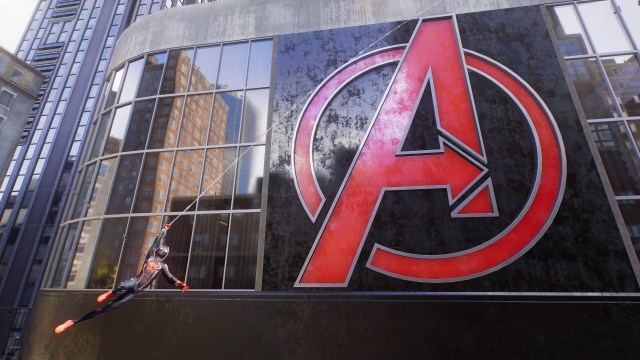
I don’t know if Marvel’s Spider-Man 2 is the best superhero game ever, but it is unquestionably the best-looking in the history of the genre and has far surpassed the Arkham series in this respect. Marvel’s Spider-Man 2 features jaw-dropping, photorealistic New York scenery, and includes a 60 frames-per-second performance mode. Although some of the Arkham remasters have been reported to reach 60 FPS frame rates, through my personal experience spending hundreds of hours in the Arkham series, the graphics/visuals, by and large, are more shrouded in darkness and feel more dated upon revisitation. Maybe this visual disparity is because the Arkham series effectively ended eight-plus years ago, but it doesn’t change the reality that the newly released Marvel’s Spider-Man 2 clearly has better graphics.
Worse: Voice Acting
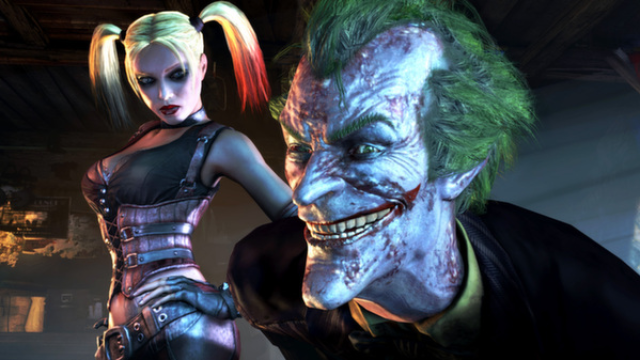
While Spider-Man may hold the visual edge, Arkham holds an auditory edge, specifically in terms of voice acting. Even though Marvel’s Spider-Man 2 makes use of an excellent voice cast, full of talented, award-nominated performers who bring Insomniac’s vision of the Marvel universe to life, it doesn’t change the fact that Rocksteady’s Batman: Arkham series featured arguably the best acting roster in the history of gaming, bringing together some of the greatest voice artists to ever grace the medium.
These include Troy Baker (as the Joker in Arkham Origins, multiple characters in the series), Nolan North (the Penguin, multiple characters), Arleen Sorkin (Harley Quinn in Arkham Asylum), Tara Strong (Harley Quinn in Arkham City and Knight), Wally Wingert (the Riddler), Dave Fennoy (Lucius Fox), Jonathan Banks (Commissioner Gordon in Arkham Knight), Dee Bradley Baker (Ra’s al Ghul), and many, many (many) more. Most importantly, the most notable actors in the series were the iconic Joker/Batman duo of Mark Hamill and the late, great Kevin Conroy, reprising their roles from Batman: The Animated Series.
Yes, the cast of Marvel’s Spider-Man 2 also includes several legends in its ranks (Yuri Lowenthal, Laura Bailey, Tony Todd, etc.), but its voice acting star power does not come anywhere near the same level as the Batman: Arkham series.
Better: Customization/Costumes

The character customization in Marvel’s Spider-Man 2 far exceeds Batman Arkham, not only in its variety but also for being pro-consumer. While Batman Arkham had a few snazzy Batsuits that harkened back to various notable Batman films and comic storylines, all of these skins could only be obtained through microtransactions or pre-ordering the game. On the other hand, Marvel’s Spider-Man 2 includes an astonishing 68 skins for Peter Parker and Miles Morales to try out, and all of them can be obtained in-game without having to pay real money.
Worse: Side Content/Leaderboards
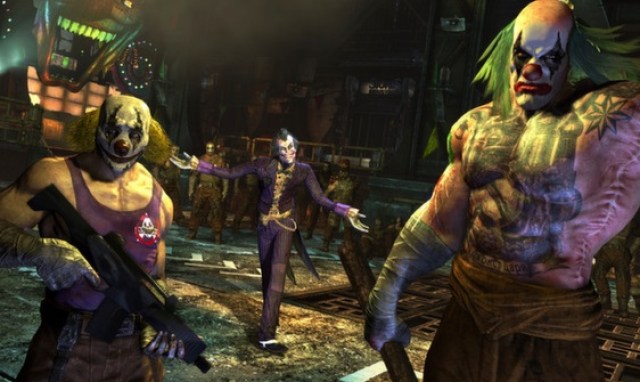
In comparison to Batman: Arkham, Marvel’s Spider-Man 2 is lacking in its side content, at least as of this writing. Spider-Man 2’s Mysteriums are certainly nothing to scoff at, but The Batman Arkham games had unlockable combat maps, stealth challenges, and Batmobile courses that would allow players to see how their skills compared with other gamers around the world through the use of ranked leaderboards (which are still online, even to this day!). As of this writing, there is simply no equivalent to this in the latest Spider-Man game.
Better: Villain Variety
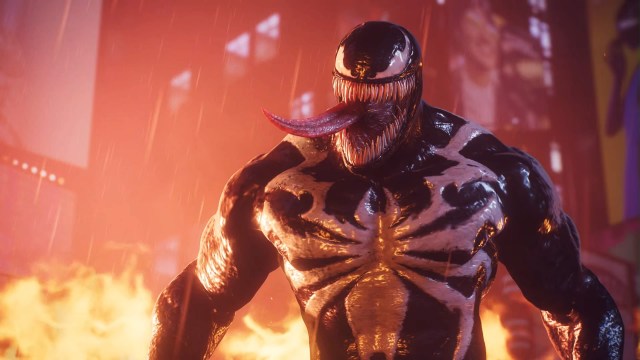
Let me be clear, both Rocksteady’s Batman and Insomniac’s Spider-Man series have incredible villain variety and make impressive use of the DC and Marvel heroes’ rogues galleries. However, Spider-Man has a better rotation of arch-villains. This is probably due to the nature of the character, as there is still a major debate on who is exactly the greatest Spider-Man villain, with a number of notable storylines, and strong cases to be made for multiple Spider-foes.
Marvel’s Spider-Man 2 further perpetuates this reality, as the game features two main villains with both Kraven the Hunter and Venom duking it out against the wall-crawler (and each other), while the first game in the series had Mister Negative and Doc Ock as the primary antagonists. This is a major departure from the Arkham series, as every Batman game was beholden to the Joker as the main villain (even in Arkham Knight when he was dead). Despite the Joker’s greatness as a villain, the Clown Prince of Crime casts a shadow over the rest of Batman’s villain roster, while Spider-Man 2 does a better job of allowing multiple villains to share the spotlight.
Worse: The Arch-Villain

As much as I’ve enjoyed Marvel’s Spider-Man’s varied cast of evil adversaries, none of these characters stand a chance of surpassing Mark Hamill’s legendary Joker. Although it could have been interesting if other Batman foes had received more screen time in the Arkham series, Rocksteady’s incarnation of the Joker remains one of the greatest villains in the history of the medium, worthy of his stranglehold on the role of primary antagonist. The Joker’s combination of genius, insanity, and complete disregard for human life make him a terrifying force to deal with, always seeming to be just one step ahead, an essential attribute for any videogame archvillain. As the late, great Stan Lee would say, “Nuff Said!”
Batman: Arkham vs. Marvel’s Spider-Man
Just to clarify, despite my minor criticisms and the frequent use of “better” and “worse” in this article, it must be noted that Batman: Arkham and Marvel’s Spider-Man are not only my personal favorites, or the best games of their genre, but are unquestionably some of the greatest videogames ever made, well-deserving of their high praise and accolades.
The truth is that these series will be forever interconnected, and are likely to remain as the two biggest names of the superhero genre for the foreseeable future. The main takeaway in reexamining Arkham after Marvel’s Spider-Man 2 is that these games have built a strong foundation for future superhero titles (or similar genres) to build on. Just as Insomniac drew influence from Rocksteady, and Rocksteady had their own inspirations, Marvel’s Spider-Man and Batman: Arkham have created the blueprint of what it takes to make a great comic book-based game, and are truly second to none… except for each other, of course.
